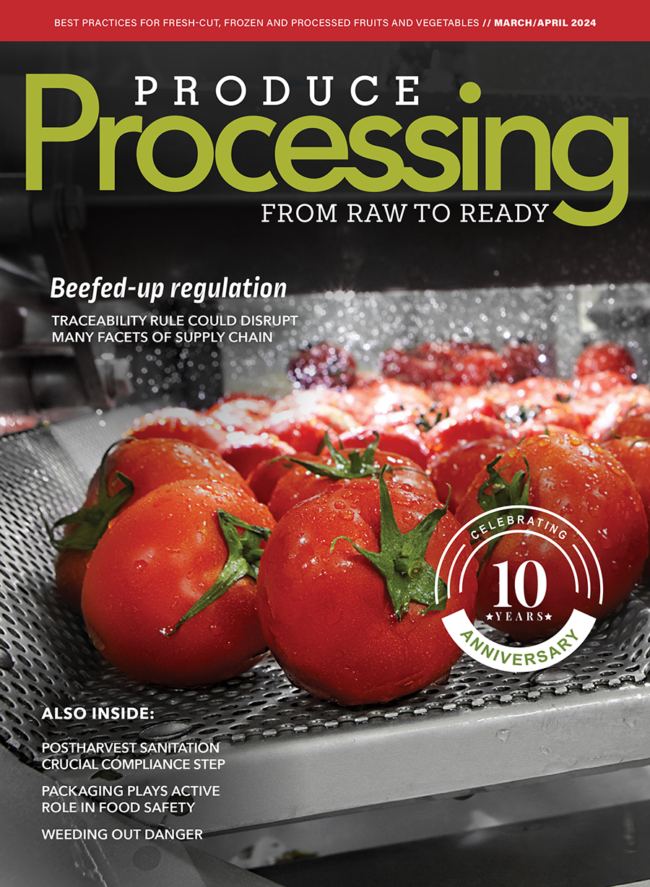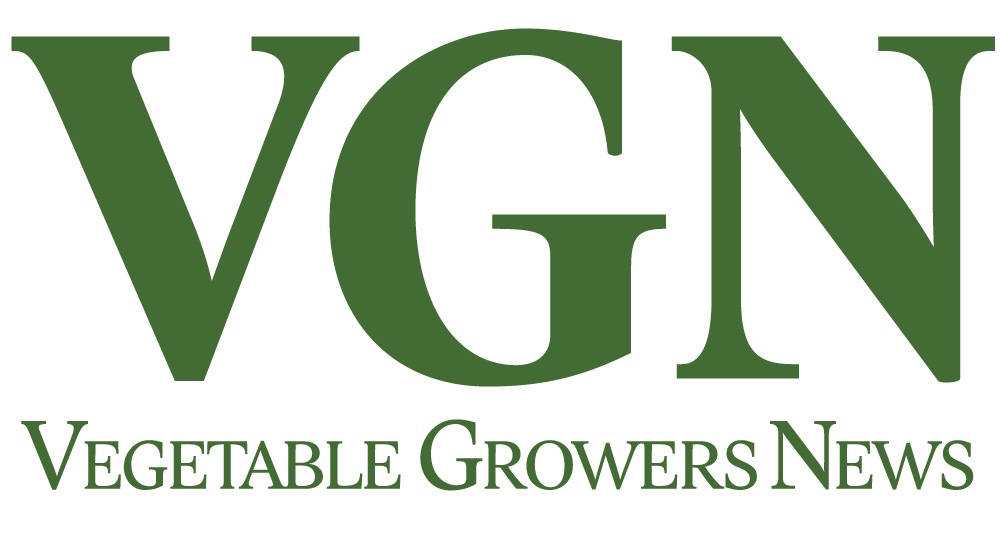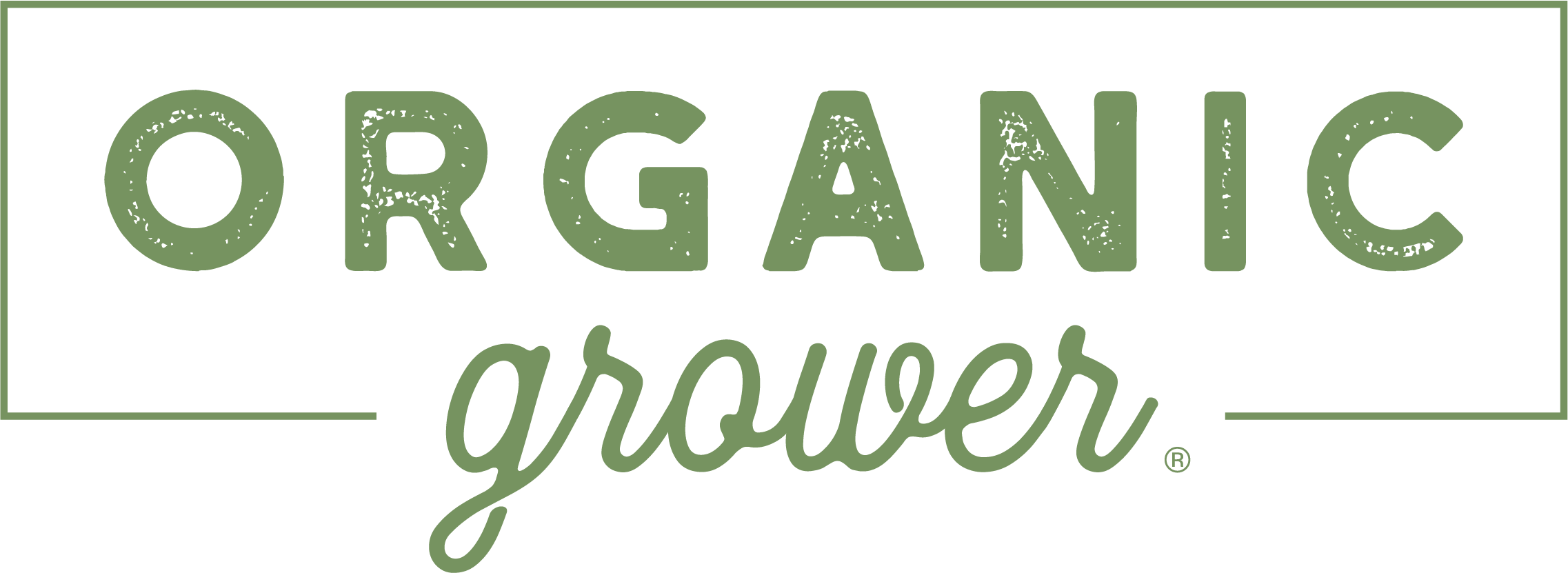Better designed equipment can reduce deep cleans, downtime
By Melanie Epp | Contributing Writer
In September 2011, Jensen Farms in Colorado found itself in the thick of the very nightmare every food processor dreads. The Centers for Disease Control and Prevention (CDC), along with public health agencies in several states, had traced a serious listeria outbreak back to Jensen’s Rocky Ford cantaloupes.
The outbreak, caused by Listeria monocytogenes infections, affected 147 people in 28 states, 33 of whom did not survive. Not only did the outbreak lead to the company filing for bankruptcy, but it ended up costing the entire industry nearly $40 million in damages as well. It’s the kind of news no food processor wants to wake up to.
Looking deeper, the CDC found that the likeliest source was a truck parked next to the packing plant that had been used to haul waste cantaloupes to a nearby cattle operation. Listeria harbors in standing water and could have easily spread from employee footwear to plant floors to conveyors and other packing equipment. Upon closer inspection, the CDC found that equipment was not only in a state of disrepair, but also difficult to clean and sanitize.
The outbreak, for many, signaled the need for industry-wide change. Joe Stout, founder and president of Commercial Food Sanitation, an Intralox company, has spearheaded much of that change.
“Our goal is to advance hygienic design knowledge and application to promote public health and safety,” Stout said in a recent interview.
Stout, who spent many years with Kraft Foods, has been working in the industry for decades. His work has led him to food processing facilities that contained equipment with potentially problematic harborage points.
“If there are harborage points on equipment that might collect or allow growth of pathogens, we believe that equipment should be torn down at some frequency to be thoroughly cleaned,” he said.
The problem with doing so, though, is that it cuts into production time. When food processors aren’t producing, they aren’t making money. This is one of the big challenges the industry faces, Stout said. He believes the answer is more hygienically designed equipment that would eliminate the need for those deep cleans.
“So that’s been an incentive for trying to improve hygienic design — it comes back to productivity and giving the time needed to run more production, rather than less production because of the need to clean at a set frequency,” Stout said.
“But it’s not going to happen overnight,” he said.
Recognizing there was work to be done, Commercial Food Sanitation began in 2013 on a collaborative basis to uncover the main sanitation and hygienic design issues.
In 2016, thanks to support from Taco Bell, Stout held the first Hygienic Design Forward summit in California. The summit brought together 15 original equipment manufacturers (OEMs), each of which brought along a salesperson and an engineer, and 15 processors, who brought along a food safety specialist and an engineer or operations person. The event included talks by notable quick-service restaurants, as well as a speed-networking event where each processor spent 12 minutes one on one with each OEM.
“It was a very vibrant discussion,” Stout said. “And people really enjoyed it and learned a lot in that meeting.”
In January 2017, Stout held a similar session at Northwest Food Processors Association on the West Coast. Individuals from the produce sector attended the meeting, as well as individuals from the dairy sector.
“That meeting was focused on hygienic design,” Stout said. “And that was a very good group. What we ended up doing is we had the opportunity to go out on the floor and look at some of the equipment. And that was educational from a supplier side, as the OEMs would show us their equipment.”
From there, Stout held another session at United Fresh in July 2017. That was a similar speed networking processors meeting with OEMs. “We probably had 100 people at that meeting, so that was very successful,” Stout said.
While these sessions were a good start, Stout knew they had their limitations. In late 2017, he started putting together a Hygienic Design Forward group that would focus and make a 30- to 36-month commitment within the processing communities to work together with OEMs to help put together collaborative meetings and discussions on how the industry could improve, specifically with regards to their equipment.
In addition, Stout decided to link processors with their end customers, which were more often quick service restaurants. While many of the QSRs are in direct competition, food hygiene is not an area of competition for them, Stout said. Working together allows them to minimize risk for the public — and each other.
Participating partners all met in New Orleans to take part in Commercial Food Sanitation’s course on hygienic design. The purpose of the meeting was to make sure all parties were on the same level when it came to hygienic design.
“If we have comparable expectations, we can work together and really drive improvement in that OEM and make things so much simpler than they are today,” he said.
Conveyor belt manufacturers talk hygiene
Rod Markovits leads the fruit and vegetables team at Intralox. It is his team’s responsibility to work closely with their customers and educate them on ways to improve the overall process. The biggest challenge for vegetables, he said, is the downstream process of consumption. A lot of produce is consumed in the state it’s delivered.
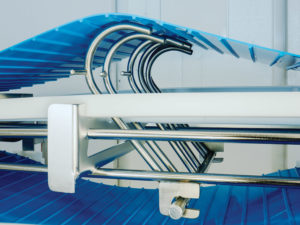
“There’s nothing to eliminate the harmful bacteria,” he said. “As you know, a lot of recalls in the marketplace are spinach, cantaloupes, sprouts, melons … and most recently romaine lettuce.
“A lot of belt-related hygiene problems occur because of the complexity of the system,” Markovits said. “The belt doesn’t levitate, it actually conveys, so it goes through a circuit on the frame. It’s really important that the belt profile is conducive to good product release.
“You don’t want it to have any fibers or wicking ability. If you have fibers on the belt it will wick and keep moisture, and moisture is where listeria harbors,” he said.
“You want conveyor surfaces — both top and bottom — to be very open and easy to clean with no crevices and pockets,” he said. “And then you want the conveyor belt to be on a system that runs without tension. You want to be able to literally lift up to access and clean — you want to be able to get in there and do your hygiene sanitation process without fighting a machine that inhibits you.”
In The Netherlands, Feltracon, a company that designs belt technology for the fruit, vegetables and meat processing sectors, has also been looking at how they can improve hygienic design of the conveyor belts they offer.
“Food safety is of great importance to design and automation in the food processing industry, not only the conveyor belts, but also our washing and drying and weighing components,” said company engineer Henk van der Wiel.
“For each project, we analyze all product features and the process plan,” he said. “We address all product contact parts and minimize the amount of product transfers in a total process. With this information we select and design the best solution for the product.”
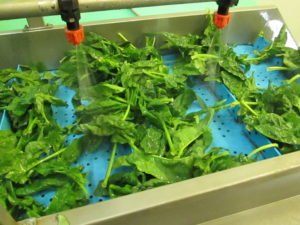
Another Dutch company, Volta Belting, develops, manufactures and promotes Thermo Plastic Elastomer (TPE), homogeneous conveyor belts. Business Development Manager David Genossar said.
“The Homogeneous TPE belts, friction driven and positive driven belts, offer solutions for conveyor belts with improved hygiene properties,” he said. “The belts do not have any fabric carcass member, as the traditional friction driven belts, and compared to modular belts, no links, no pins, no crevices that offer hidden harbor areas for bacteria to grow.”
Another challenge is the fabric used in traditional friction driven belts is difficult to clean and deteriorates with the chemicals used for cleaning.
“Volta belts eliminate this risk,” Genossar said. “Modular belts have thousands of hidden areas in the structure of the belts, assembly of thousands of parts with hidden areas. The homogeneous belts offer no such areas; therefore, lower bacteria counts and lower risk of contamination.”
Today’s food processors are constantly under the gun to reduce the risk of outbreaks and improve food safety standards. Working together can lead to overall improvement. As Stout pointed out, even though the food processing sector is highly competitive, food hygiene should not be an area of competition. Working together will help to minimize risk for the public — and each other.
Top photo: A vegetable washing system from Feltracon.


